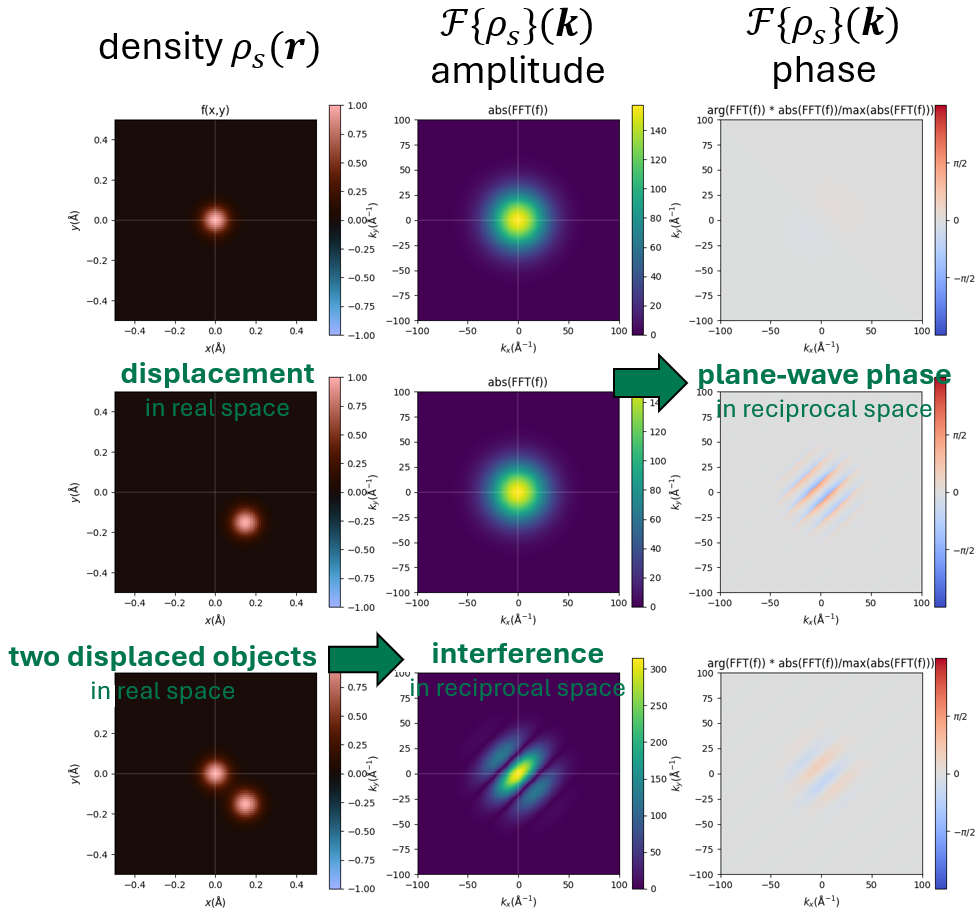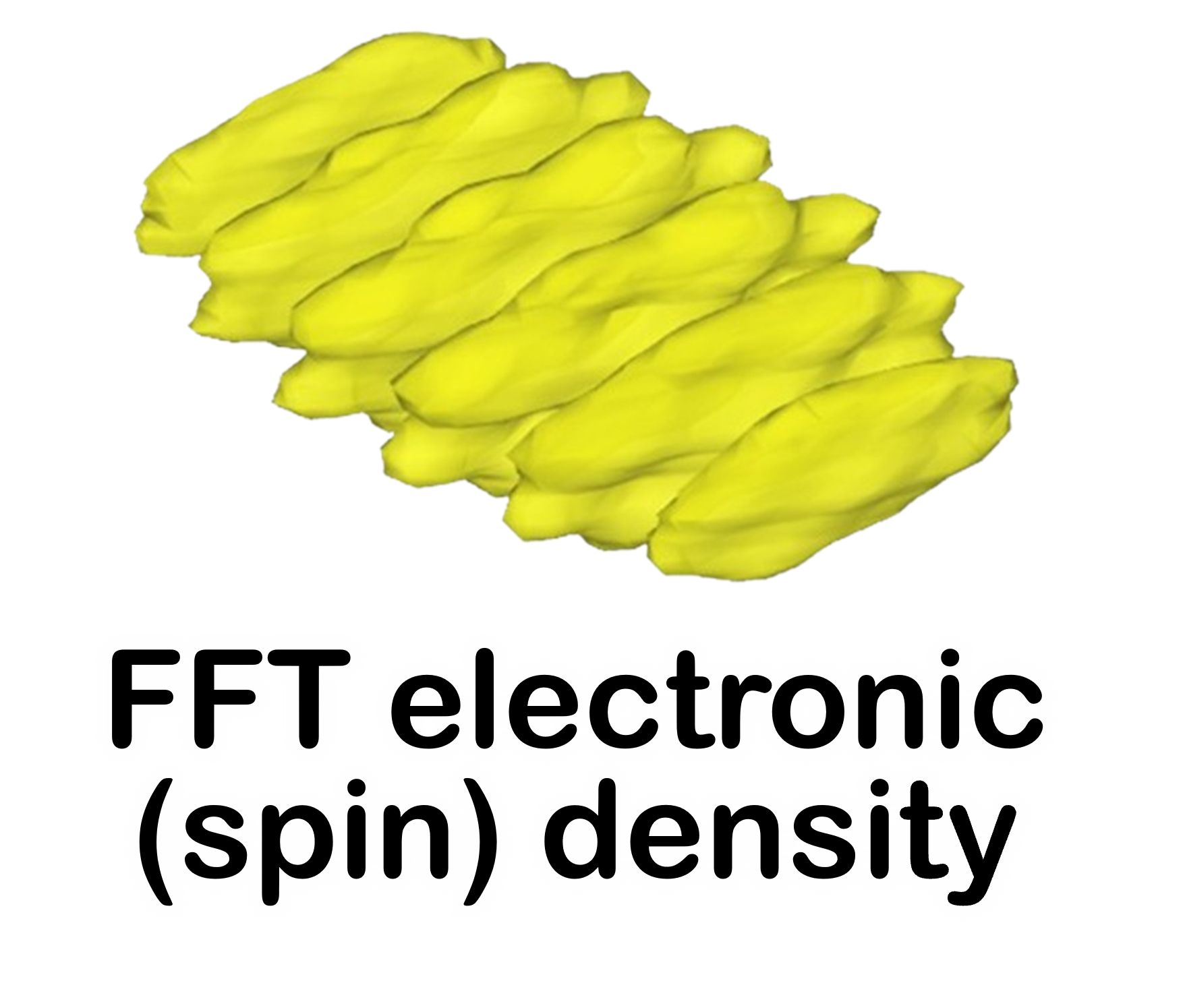Theory#
High-temperature superconductivity in cuprates can be studied by inelastic neutron scattering (INS) experiments.
Neutron scattering#
The INS spectra of a copper dimer with non-overlapping magnetic orbitals
includes the magnetic form factor
which is the Fourier transform of the spin density \(\rho_\mathrm{s} (\mathbf{r})\).
The spin density is obtained from a density functional theory (DFT) calculation and usually output as a Gaussian .cube file.
The (spin) density from a .cube file can then be loaded, filtered out, Fourier transformed, and visualized by the present fft_electronic_spin_density package.
Filtering-out \(\rho_\mathrm{s} (\mathbf{r})\) around selected sites#
Keeping the spin density only around selected sites is important to get rid of spurious spectra and evaluate the effect of the oxygen ligands.
Replacing \(\rho_\mathrm{s} (\mathbf{r})\) by a model#
To assess the influence of a possible overlap (obtaining the spectral function \(E_\perp\) under the Heitler-London approximation), the fft_electronic_spin_density package also allows to replace the DFT-calculated density by a model atomic orbitals, which can be fitted to the original density.
Such model is very useful to, e.g., study the \(E_\perp\) dependence on the Cu-Cu separation \(|r_{ab}|\).
Fourier transform#
See the fourier_transform_behavior.ipynb notebook in the examples folder to get a better understanding of FFT.
Resolution and system size#
… as reciprocal quantities:
Due to the design of the fast Fourier transform (FFT), the resolution
of \(\rho_\mathrm{s} (\mathbf{r})\) is limited by the size of
the \(\mathcal{F}\{\rho_\mathrm{s} (\mathbf{r})\}\) space.
The resolution of \(\mathcal{F}\{\rho_\mathrm{s} (\mathbf{r})\}\) can be increased by zero-padding the \(\rho_\mathrm{s} (\mathbf{r})\)
space. This is achieved by setting scale_factor of the Density object larger than 1.0.

Figure: Larger real space size (achieved for instance by zero padding via the scale_factor
attribute) results in a higher resolution in the Fourier reciprocal space.#
Phase due to displacement#
The dominant feature in the INS spectra, which is the stratification due to the \(\left(1-\cos \left(\mathbf{k} \cdot \mathbf{r}_{a b}\right)\right)\) term, arises in general for any Fourier transform of a repeated displaced object.
Numerically#

Figure: Displacement results in a plane-wave phase after a Fourier transform. While the FFT amplitude is unchanged if only a single displaced object is present, the interference between the phase of such two objects introduces a plane-wave term in the amplitude.#
Analytically#
The origin of the \(\left(1-\cos \left(\mathbf{k} \cdot \mathbf{r}_{a b}\right)\right)\) term can be easily shown to come from the Fourier transform of two identical functions with opposite sign displaced in space by vector \(\mathbf{r}_{a b}\) relative to each other
By substitution \(\mathbf{r'} \equiv \mathbf{r}-\mathbf{r}_{a b}\) we have
so that
and because
it follows that
using the identity \(\mathrm{sin}^2(x) = \frac{1}{2} (1 - \mathrm{cos}(2x))\); hence
Further details#
Please see L. Spitz, L. Vojáček, et al., under preparation for further details on the theory and the implementation of the present package.
